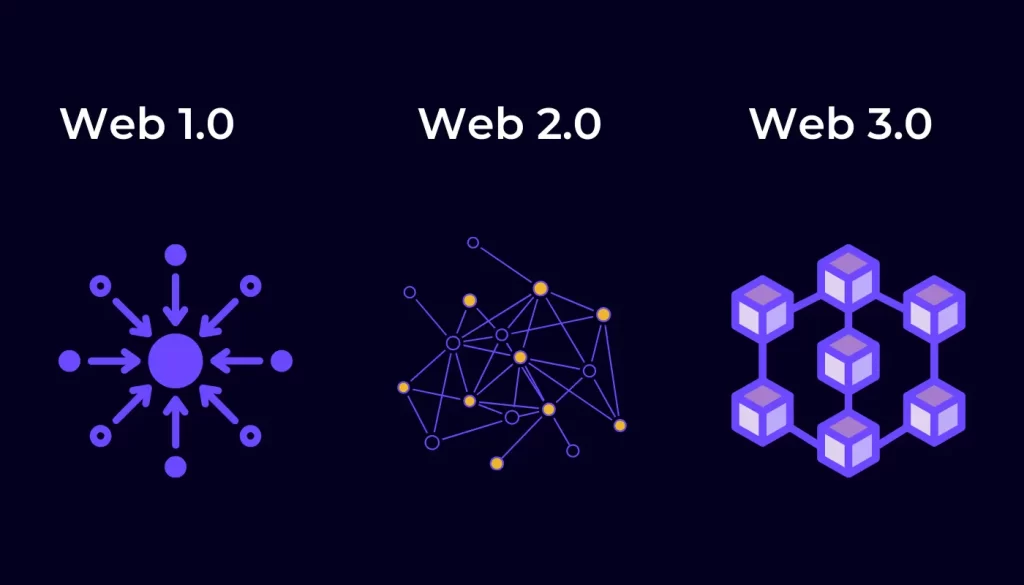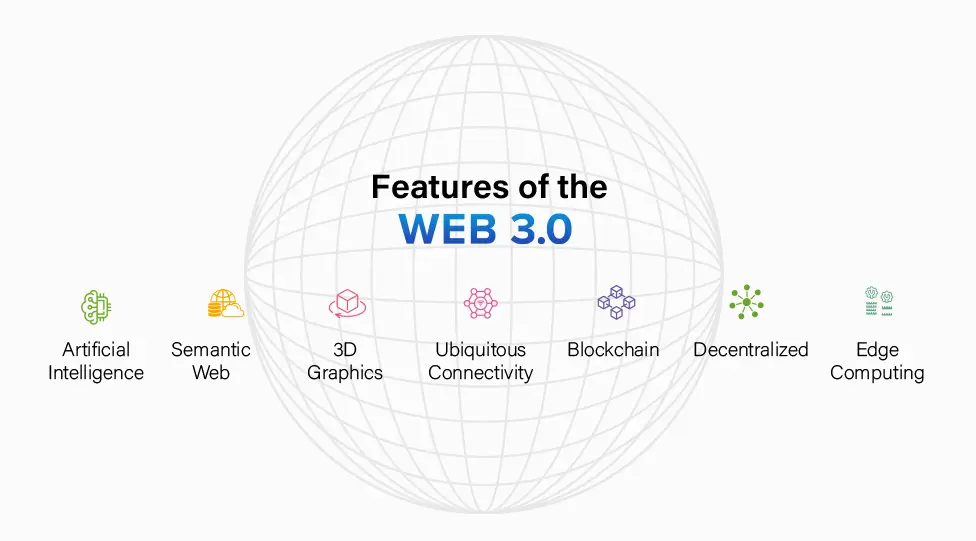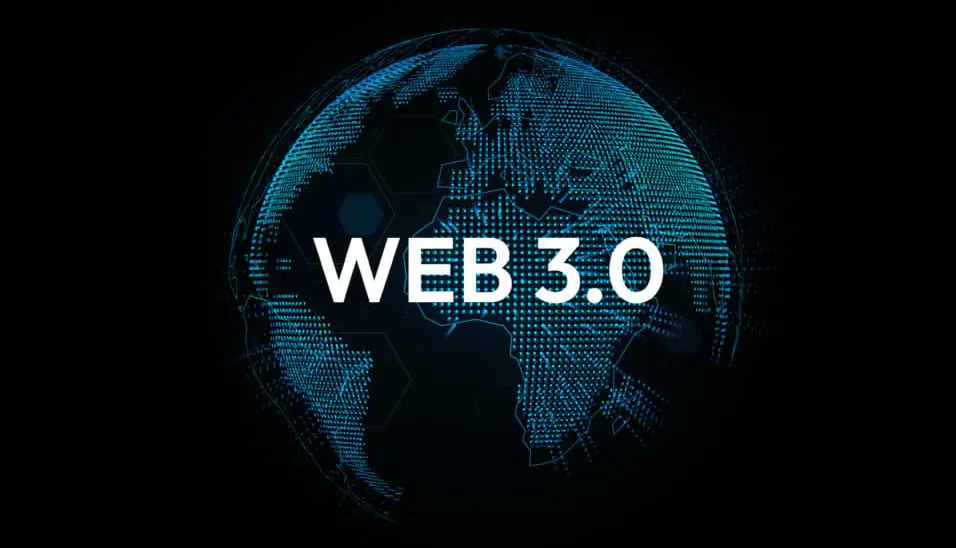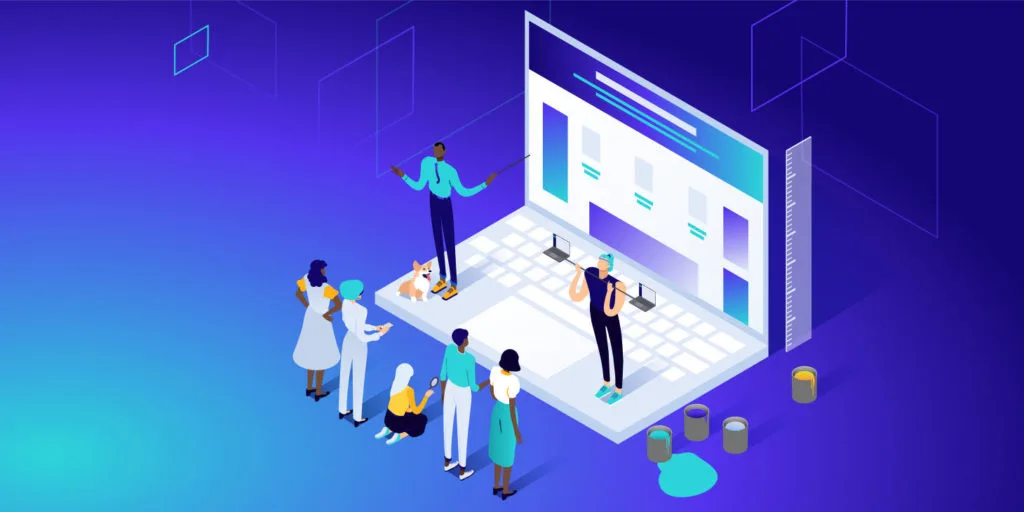Web 3.0
is a powerful new technology
that is revolutionizing the way we interact with the internet.
It is a platform for building decentralized applications (apps) that run on the Ethereum blockchain.
Web3 allows users to interact with the Ethereum blockchain securely and efficiently, enabling them to create and manage their digital assets.
It also enables developers to create and deploy apps that can interact with each other, providing a secure, distributed, and immutable platform for conducting business transactions.
Web3 is built on the Ethereum blockchain, which is a distributed, open-source, and public blockchain. This means that the data stored on the blockchain is immutable and secure, and it cannot be changed or tampered with.
Transactions that are conducted on the Ethereum blockchain are also immutable, meaning they cannot be reversed or changed.
The Web3 platform also provides developers with several tools to help them build and deploy their apps. These tools include a web interface, a command-line interface, and a JavaScript library.
The web interface makes it easy to create and deploy apps, while the command-line interface allows developers to interact with the Ethereum blockchain directly.
The JavaScript library provides developers with several functions for interacting with the Ethereum blockchain. In addition to building and deploying dapps, Web3 also provides developers with a way to monetize their work.
This is done through a process called ICOs, or initial coin offerings. ICOs are a way for developers to raise funds for their projects by selling tokens to investors.
Investors can then use these tokens to purchase goods and services from the dapps built on the Ethereum blockchain.
Web3 is a powerful technology that has the potential to revolutionize the way we interact with the internet. It provides developers with a secure and reliable platform for building and deploying dapps, and it enables users to securely interact with the Ethereum blockchain.
With the support of the Ethereum community, Web3 is quickly becoming the go-to platform for developers and businesses looking to take advantage of the blockchain revolution.

Semantic web
Web 3.0 aims to introduce a semantic layer to the internet, allowing machines to better understand and interpret data.
By implementing metadata and standardized vocabularies, the web can become more intelligent and personalized, providing users with a more efficient and relevant experience.
Decentralization
One of the core principles of Web 3.0 is decentralization, which means that data and control are distributed across a network of nodes, rather than being centralized in the hands of a few powerful entities.
Decentralization provides greater security, transparency, and resilience to the web, as it removes the reliance on centralized authorities.
What is blockchain
Blockchain technology is revolutionizing the way data is stored and exchanged across the globe.
Blockchain is a distributed ledger system that records and stores data in a public, secure, and immutable manner.
It allows for transactions to be conducted securely and quickly without the need for a third party.
In traditional databases, information is stored in a centralized server and is managed by a single entity. This makes it easy for data to be manipulated or lost.
With blockchain, data is stored in a distributed network of computers, and changes are recorded on a public ledger.
This allows for a greater level of transparency, security, and accuracy.
The technology is based on cryptographic techniques, which makes it nearly impossible for data to be changed or corrupted.
Transactions are validated by the network and stored in a permanent, immutable record. Smart contracts can also be used to ensure that the terms of an agreement are met.
Blockchain is being used in a variety of industries, such as finance, healthcare, and e-commerce. Banks are using technology to process payments securely and efficiently.
Healthcare organizations are using it to securely store and share patient records.
And e-commerce companies are using it to create tamper-proof records of transactions.
Blockchain technology is still in its infancy, and there are still many challenges to overcome.
However, it has the potential to revolutionize the way data is stored and exchanged.
By eliminating the need for a third party and providing a secure, immutable record of transactions, blockchain has the potential to revolutionize the way data is stored and exchanged.
Blockchain technology
Blockchain technology plays a key role in Web 3.0 by enabling secure and transparent transactions without the need for intermediaries.
It offers a decentralized and tamper-proof ledger that can be used for a wide range of applications, from cryptocurrencies to supply chain management.

Web 3.0
Learning web3
Learning web3 can be a daunting task for those who are not experienced in coding or software development.
However, with the right tools and resources, anyone can learn web3 and start developing their applications.
When learning Web 3.0, it’s important to break down the process into manageable steps. To begin, you’ll need to understand the basics of web3 and blockchain technology.
This includes familiarizing yourself with the Ethereum blockchain, learning the Solidity programming language,
and understanding the different types of tokens, such as ERC-20 tokens and ERC-721 tokens. Once you’ve familiarized yourself with
the basics of Web 3.0, you can begin to learn more advanced topics, such as smart contracts and decentralized applications (dApps).
To further your knowledge, you can also begin to explore blockchain development tools, such as Truffle, Ganache, and Remix.
As you become more comfortable with web3 and blockchain technology, you can start to develop your applications.
Many of the tools, such as Truffle and Ganache, come with tutorials to help you get started.
You can also find many resources online, such as tutorials and documentation, to learn more about web3 development. Finally, you can stay up to date on the latest developments in web3 and blockchain technology through news sites and forums.
This will help you stay ahead of the game as the technology continues to evolve. Learning web3 is an exciting journey that can open up a world of possibilities.
With the right resources and a bit of determination, anyone can become a blockchain developer.

Programming language on Web 3.0
The web3 programming language is becoming increasingly popular as a way to build decentralized applications (dApps).
This is because Web 3.0 is built on top of the Ethereum blockchain, which allows developers to create dApps that are trustless and secure.
Web 3.0 is a versatile programming language that is being used by developers to create a variety of different dApps, ranging from distributed data storage to decentralized exchanges. The web3 programming language is based on JavaScript and is designed to be easy to learn and use.
It is an object-oriented language that can be used to create complex, distributed applications.
The language is designed to be secure and reliable, allowing developers to build trustless applications that are resistant to tampering and manipulation.
The web3 language has been used in a variety of projects and applications, including decentralized exchanges, distributed data storage, and games.
It is also being used for smart contracts, which are programs that execute automatically when certain criteria are met.
Smart contracts are a great way to create trustless and secure transactions on the Ethereum blockchain. In addition to the web3 programming language, developers are also using a variety of other tools to create dApps on the Ethereum blockchain.
These tools include frameworks, libraries, and other tools that make it easier for developers to create complex applications.
As the Ethereum blockchain continues to develop and become more popular, the web3 programming language will become an even more important tool for developers.
It is a versatile language that is easy to learn and use and secure enough to be used for building trustless and secure applications.
As the Ethereum blockchain continues to grow, web3 will become an even more important programming language for developers.
Web 3.0
Interoperability
Web 3.0 aims to make it easier for different applications and platforms to communicate with each other through interoperability. This means that users can seamlessly move between different services without having to worry about compatibility issues, creating a more integrated and cohesive web experience.
Smart contracts
Smart contracts are self-executing agreements that run on the blockchain, enabling secure and transparent transactions without the need for intermediaries. They have the potential to revolutionize a wide range of industries, from finance to real estate, by automating complex processes and reducing the need for legal intermediaries.
Artificial intelligence
Web 3.0 is poised to unlock the full potential of artificial intelligence (AI) by providing a more comprehensive and structured data environment. By leveraging the power of AI, the web can provide more personalized and intelligent experiences to users, as well as more efficient and effective decision-making capabilities.
Decentralized applications (DApps)
Decentralized applications (DApps) are software programs that run on a blockchain network, providing users with a range of services and functionalities without the need for intermediaries. DApps are a key component of Web 3.0, as they enable greater user control, security, and privacy.
User privacy
Web 3.0 places a strong emphasis on user privacy by implementing technologies such as encryption, zero-knowledge proofs, and decentralized identity. By providing users with greater control over their data, Web 3.0 aims to create a more secure and trustworthy online environment.
Tokenization
Tokenization refers to the process of representing assets or rights as digital tokens on a blockchain network. This allows for greater liquidity, accessibility, and transparency, as well as the creation of new financial instruments and business models.
Web 3.0 development
Web 3.0 development is an active and rapidly evolving field, with a range of technologies, frameworks, and platforms being developed to enable the transition to a more decentralized and intelligent web. This includes initiatives such as Polkadot, Ethereum, and IPFS, which are working to build the infrastructure for Web 3.0.
You can get a free consultation




